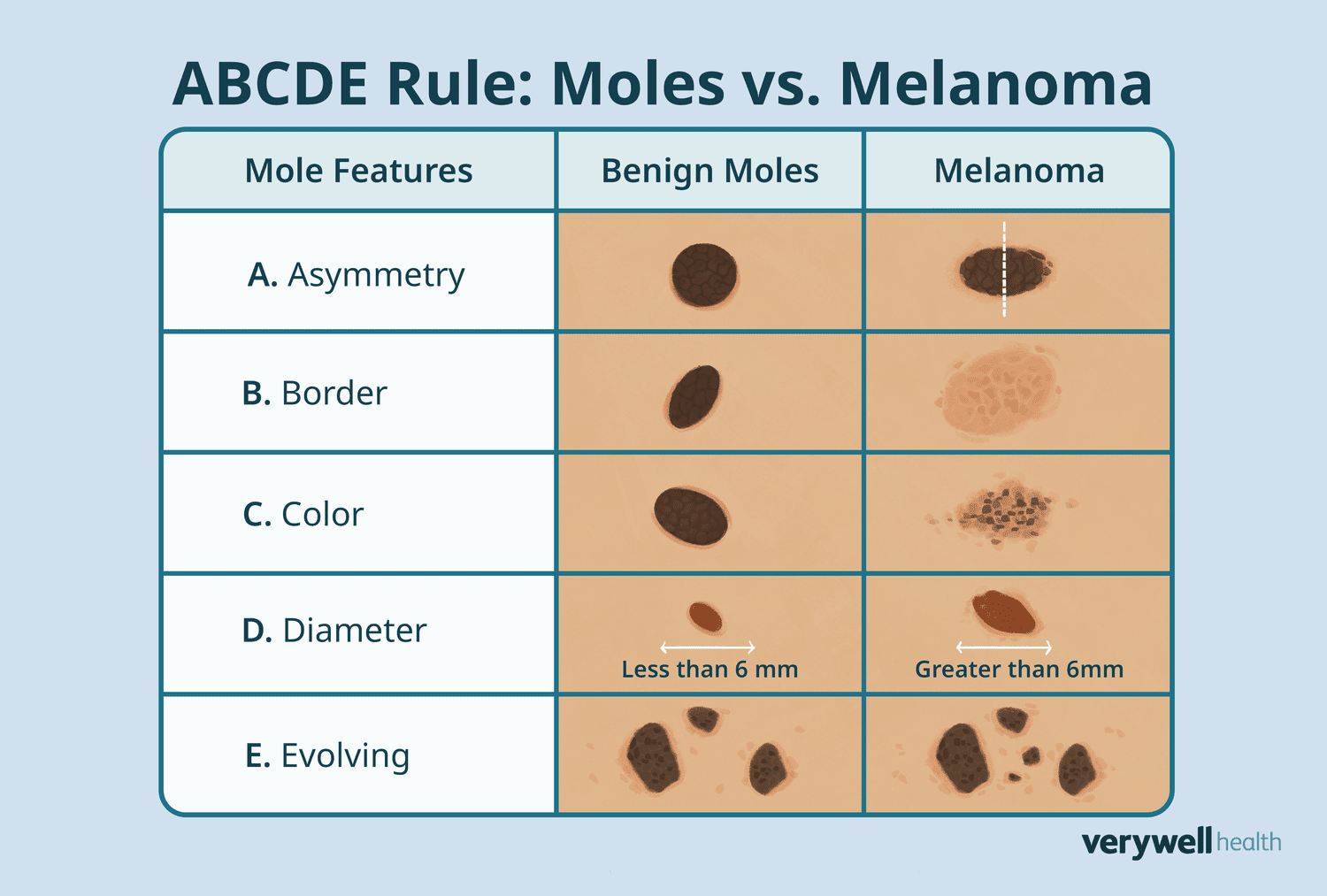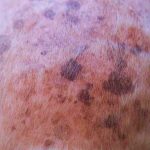When it comes to our skin, most of us tend to focus on preventing wrinkles and acne rather than paying attention to something as seemingly innocuous as moles. However, the truth is that moles can be a vital indicator of our overall health, and understanding the difference between benign and malignant moles is crucial for early detection and treatment.
Benign Moles vs Malignant Moles: Understanding the Difference
While most moles are harmless, some can be a sign of skin cancer. In this blog post, we’ll delve into the world of moles to help you distinguish between benign and malignant moles.
What’s the difference?
A benign mole, also known as a nevi, is a non-cancerous growth that can appear anywhere on the skin. It usually has distinct borders and a uniform color. On the other hand, a malignant mole, or melanoma, is a type of cancer that develops from pigment-producing cells called melanocytes. Melanomas are typically dark in color, have an irregular shape, and may be asymmetrical.
The importance of early detection
Early detection of melanoma can significantly improve treatment outcomes and increase survival rates. Unfortunately, many people don’t realize they have a malignant mole until it’s too late. By understanding the difference between benign and malignant moles, you’ll be better equipped to identify potential skin cancer risks and seek medical attention if necessary.

When it comes to our skin, most of us tend to focus on preventing wrinkles and acne rather than paying attention to something as seemingly innocuous as moles. However, the truth is that moles can be a vital indicator of our overall health, and understanding the difference between benign and malignant moles is crucial for early detection and treatment.
Benign Moles vs Malignant Moles: Understanding the Difference
While most moles are harmless, some can be a sign of skin cancer. In this blog post, we’ll delve into the world of moles to help you distinguish between benign and malignant moles.
What’s the difference?
A benign mole, also known as a nevi, is a non-cancerous growth that can appear anywhere on the skin. It usually has distinct borders and a uniform color. On the other hand, a malignant mole, or melanoma, is a type of cancer that develops from pigment-producing cells called melanocytes. Melanomas are typically dark in color, have an irregular shape, and may be asymmetrical.
The importance of early detection
Early detection of melanoma can significantly improve treatment outcomes and increase survival rates. Unfortunately, many people don’t realize they have a malignant mole until it’s too late. By understanding the difference between benign and malignant moles, you’ll be better equipped to identify potential skin cancer risks and seek medical attention if necessary.
Common characteristics of benign moles
Benign moles are typically small, ranging in size from a pinhead to 1/4 inch (6-10 mm) in diameter. They usually have a uniform color, such as brown or tan, and may appear flat or slightly raised. Benign moles can be present at birth or develop later in life. In some cases, they may grow or change over time.
Common characteristics of malignant moles
Malignant moles, on the other hand, are typically larger and more irregularly shaped than benign moles. They can appear as a new growth or an existing mole that changes size, shape, or color over time. Malignant moles may also itch, bleed, or change texture.
ABCDE rule for spotting melanoma
If you’re concerned about a mole on your skin, remember the ABCDE rule: A – Asymmetry (is it irregularly shaped?), B – Border (is it notched or scalloped?), C – Color (does it have multiple colors?), D – Diameter (is it larger than 6 mm?), E – Evolving (has it changed over time?). If you notice any of these characteristics, consult a dermatologist for further evaluation.
By being aware of the differences between benign and malignant moles, you’ll be better equipped to protect your skin health. Stay tuned for our next blog post, where we’ll explore how to perform a self-exam and when to seek professional help.
Learn more about skin cancer American Academy of Dermatology’s guidelines on melanoma detectionExpert Consultation for Mole Removal and Skin Health
Get expert advice from experienced medical professionals on benign moles vs malignant moles. Schedule a consultation today!
Schedule ConsultationIn conclusion, it’s essential to understand the difference between benign and malignant moles to ensure early detection and treatment of skin cancer. While most moles are harmless, some can be a sign of melanoma, which is life-threatening if left untreated.
By knowing what to look for – such as irregular shapes, uneven borders, and changes in size or color – you’ll be empowered to take control of your skin health. Remember, it’s always better to err on the side of caution when it comes to your skin, and regular check-ups with a dermatologist can help identify potential issues before they become serious.
So, take a few minutes today to examine your skin, paying attention to any new or changing moles. And if you’re unsure about what you see, don’t hesitate to schedule an appointment with your doctor. Your health is worth it!
What is anemia caused by folic acid deficiency?: Did you know that a lack of folic acid can lead to anemia? Learn the shocking truth about this common nutritional deficiency and how to prevent it with our expert advice.
What is clobetasol propionate cream equivalent?: Are you searching for an alternative to clobetasol propionate cream? Find out what other treatments and products can help alleviate your symptoms with our expert comparison guide.



